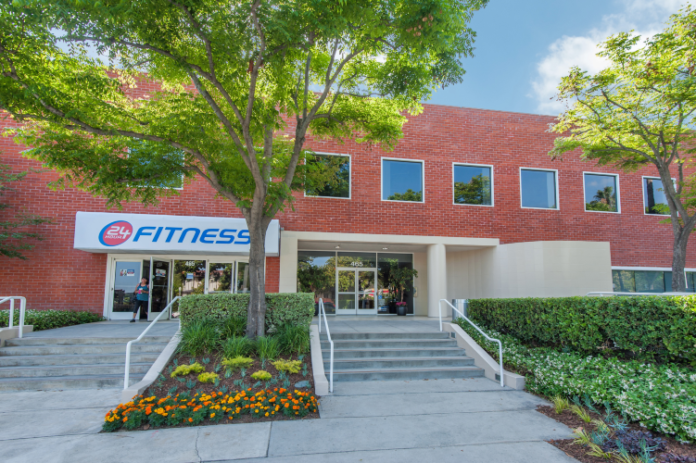“L.A. is a growing market, but it’s not one with a lot of inventory,” he said.
The life sciences industry in Los Angeles is flourishing thanks to a boost in financing for companies in the sector, along with the opening of new incubators and the presence of pedigreed colleges and hospitals.
“Even before Covid, we were already seeing the life sciences industry grow, and the demand from those types of companies increase, but it has jumped exponentially since Covid,” Shaun Stiles, who leads the life sciences practice group in Los Angeles for Cushman & Wakefield Inc., said.
That demand has led to a tight leasing market with a vacancy rate of a mere 1.5%, according to Cushman & Wakefield.
“It’s virtually impossible to find existing lab space,” said Stiles. “It rarely comes up, and if it does it leases very quickly.”
Historically, Los Angeles has not enjoyed a reputation as a life sciences hub, a designation that has gone to cities like San Diego and Boston. But if real estate is any indication, that could be changing.
“We’re seeing a big push and really anticipate the life sciences component of things taking off dramatically,” Patrick Church, a managing director at Jones Lang LaSalle Inc., said. “We think L.A. is going to put itself on the map. We’ve got an abundance of talent that other markets are starting to run out of.”
Incubating talent
Incubating talent
L.A. County life sciences companies raised $1.7 billion in financing last year, the most of any county in California, which Stiles said has only added to demand.
The region is also now home to a handful of bioscience incubators, including independent facilities and ones associated with UCLA, Cal State Los Angeles and Cal Poly Pomona.
Those universities are generating jobs and pushing out fresh talent.
“Los Angeles is a very active and robust life sciences community largely because of the existence of UCLA, USC and Caltech. And then you have a number of other institutions when you combine Cedars-Sinai and other hospitals and institutions,” Jeff Pion, a vice chairman at CBRE Group Inc., said.
From 2016 to 2020, leading schools have received billions of dollars in grants, contracts and other awards from the National Institutes of Health. In that time period, $2.5 billion went to UCLA and $1.4 billion to USC.
All that money has led to more jobs in the area. In the past 20 years, the number of life sciences jobs ballooned by 77% in L.A. County, according to Cushman & Wakefield.
Building demand
Building demand
Church said Pasadena is booming as a hub largely because of Caltech. There’s also a large incubator called Lab Launch in Monrovia with an upcoming location planned for Atwater Village, and companies like Xencor are moving to Pasadena.
The Valley, meanwhile, is benefiting from the presence of Amgen Inc., which calls nearby Thousand Oaks home. As a result, companies in the areas surrounding it, like Westlake Village, have also seen demand from other life sciences companies.
And the Westside and El Segundo are popular because of UCLA and Silicon Beach’s tech startups.
In addition to traditional office space, life sciences companies need rooms that can accommodate labs, research, development and manufacturing.
Kevin Shannon, co-head of capital markets at Newmark Group Inc., said he is seeing property owners and tenants tackle conversions of existing properties because the land for ground-up development isn’t always available.
Xencor ended up signing a lease for 148,000 square feet at a building being converted into a life sciences property in Pasadena. Its landlord, LPC West, the West Coast arm of Lincoln Property Co., purchased the site at 465 N. Halstead St. earlier this year for $72.5 million.
“We see the life sciences industry growing very rapidly,” Rob Kane, executive vice president of LPC West, said when the conversion was announced. “We think that this is a rapidly growing industry, and we see significantly increasing demand in Los Angeles for life sciences.”
But conversions can be complicated due to costs and zoning restrictions.
Katie Bernhisel, director of Raise Commercial Real Estate, places the cost at $180 to $200 a square foot, if not more — and that doesn’t include the costs associated with building a lab.
Despite the hefty price tags, landlords are interested in taking on conversions because the rents earned from these properties are high.
“We will see rental rates that will justify that upfront spend,” Bernhisel said.
Derreck Barker, senior director of real estate acquisitions at Nuveen agreed, adding that there is a “larger return on your investment” for life sciences spaces.
Nuveen, he said, is interested in building more life sciences spaces, even without a tenant in mind.
“You’re starting to see some speculative opportunities,” Barker said. “People are buying land with the intent to start development. What we’ve found in life sciences is even if you have the intention of starting on a speculative basis, the reality is a tenant being in place before heavy construction has started is highly likely.”
Newmark’s Shannon — who called life sciences one of real estate’s most desirable “food groups” during the pandemic — is confident about L.A.’s future as a destination for these companies.
“The trend line is clear: It’s going to grow,” he said. “We have a long way to go to catch up with those major hubs, but you are seeing more discussion of spec life sciences development to meet that demand.”

